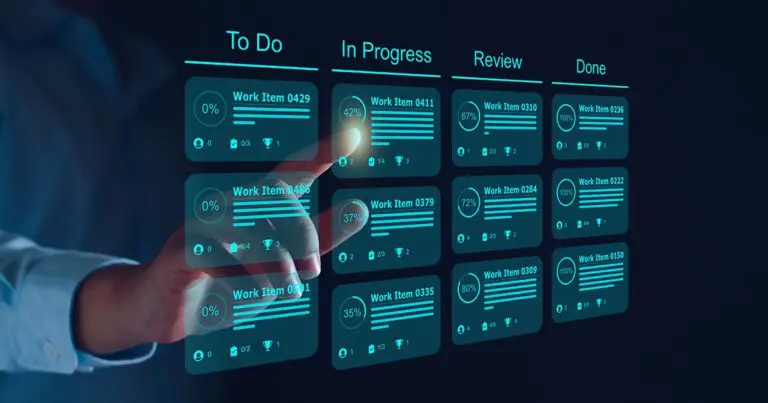Top Tools and Tech for the Software Development Life Cycle

With the endless development of innovative technology, choosing the tools and tech necessary to develop, maintain, and improve software projects can be overwhelming.
This is why it’s important to hone in on the most popular software development life cycle (SDLC) tools and technologies to provide you with insight into project management software, code review tools, automated testing frameworks, and more.
By leveraging these modern techniques and approaches, you can increase your efficiency and help ensure success in future SDLC-related endeavors.
Tools and tech for successful SDLC
There are a number of new tools and tech that can support a successful software development lifecycle that includes project management software, automated testing frameworks, and bug-tracking software.
- Project Management Software
- Code Review Tools
- Automated Testing Frameworks
- Source Code Management Software
- Bug Tracking Software
- Integration and Collaboration
Project Management Software for SDLC
Project management software is essential for any profession that requires an organized approach, but they’re especially relevant for software development.
This type of platform helps organizations to organize their workflow by providing powerful tools such as tracking changes made to a project, managing deadlines, and assigning tasks efficiently.
Popular examples of project management software include JIRA, Trello, Microsoft Project, and Asana.
Code Review Tools for SDLC
Code review tools are an important part of software development because they allow developers to view the code written by teammates before merging it into a project.
This allows teams to point out potential errors in coding as well as suggest improvements that could be made.
Some of the most popular code review tools include GitHub, Bitbucket, Reviewable, and Crucible.
Automated Testing Frameworks for SDLC
Automated testing frameworks are crucial for evaluating an application’s functional accuracy and stability.
By automating tests on each new version of a software project, developers can quickly identify potential bugs and problems that need to be addressed.
Examples of automated testing frameworks include Selenium, Appium, Testim, and Cypress.
Source Code Management Software for SDLC
Source code management (SCM) software is used to store and track changes made to a project’s source code over time.
This allows developers to review past versions of a project and more easily collaborate on large projects.
Popular source code management software includes Git, Subversion (SVN), Mercurial, and CVS.
Bug Tracking Software for SDLC
Bug tracking software is invaluable for quickly spotting and fixing issues in a project’s codebase.
This type of software allows developers to track bugs, assign tasks to team members, and store all the relevant information about an issue in one place.
Popular bug-tracking tools include MantisBT, Bugzilla, Jira, and Redmine.
Integration and Collaboration for SDLC
SDLC projects often require teams to collaborate and integrate their code across multiple systems.
Integration platforms such as Zapier, IFTTT, and Tray.io provide powerful tools for connecting various applications together with the goal of creating a seamless user experience.
In addition, collaboration software like Slack or Microsoft Teams makes it easy for teams to communicate and coordinate tasks in real-time.
How to implement SDLC Tools and Technologies
The best way to implement SDLC tools and technologies is with proper training and onboarding, establishing processes and workflows, and evaluating to make improvements.
Proper training and onboarding
Ongoing training should be provided to all teams that will be using any of the tools and technologies discussed above.
This not only ensures team members are familiar with the product but also allows them to use it efficiently and effectively.
In addition, it’s important to ensure these products are regularly updated with the latest features and fixes.
Establish processes and workflows
It’s important that teams establish clear processes and workflows for using the tools within their software development lifecycle.
This will help ensure that projects run smoothly and efficiently, as well as avoid any confusion or miscommunication.
By having a clearly defined workflow, teams are also able to quickly identify potential issues and address them before they become major problems.
Evaluate and improve
It’s important to regularly evaluate the effectiveness of any tools or technologies being used in a software development project.
This can be done by tracking metrics such as time to completion and bug resolution rate, or by conducting user surveys.
By understanding how well these products are performing, teams can then identify areas for improvement.
Future trends in SDLC tools and technologies
There are a number of emerging trends in the SDLC tools and tech space that include low-code development, AI in software development, microservices-based development, cloud computing, and DevOps automation.
Low-code development in SDLC
Low-code development is becoming increasingly popular as businesses look for new ways to create software quickly.
This type of platform allows users to develop applications with minimal or no coding, making it easier and faster for developers to implement SDLC tools and technologies.
AI in software development for SDLC
AI is revolutionizing the software development process by allowing developers to automate tedious tasks such as bug identification and code review.
These advances in artificial intelligence are making it easier for teams to quickly deploy new applications while ensuring quality assurance.
Microservices-based development in SDLC
Microservices-based development is a way of building applications by breaking them down into smaller, more manageable components.
This approach makes it easier for developers to focus on specific tasks and reuse code when needed, resulting in faster delivery cycles and improved overall performance.
Cloud computing in SDLC
Cloud computing is becoming increasingly popular as a way of deploying software projects quickly and efficiently.
By leveraging cloud services, developers can access the resources they need to implement SDLC tools and technologies faster.
This makes it easier for teams to collaborate on projects remotely as well as scale their applications quickly in response to changing demand.
DevOps automation in SDLC
DevOps automation is being used more frequently in the software development lifecycle as a way of streamlining the development process.
Tools like Jenkins and Chef are helping developers reduce manual tasks, freeing up valuable time to focus on more important tasks such as quality assurance.
These advances in automation are making it easier for teams to manage their projects efficiently and create high-quality applications faster.
Choosing the right tools and tech for SDLC
In conclusion, the tools and technologies being used in software development projects are constantly evolving.
It’s important for teams to carefully evaluate their needs and identify which tools and technologies will best suit their project before implementation.
By doing so, teams can ensure they are leveraging the right products to get the most out of their SDLC, resulting in high-quality applications that meet the needs of their users.
Looking To Gain Clarity On Your Digital Transformation Needs?
Download Your Tactical Guide to Digital Transformation to learn everything you need to know in 10 minutes or less!
C
More articles about hiring and industry trends:
- Keeping Up with Cybersecurity Compliance: Deadlines and Examples
- Everything You Need to Know About SAP HANA Migration
- How Digital Transformation Is Changing the Way Companies Market
- How Cloud Computing Solutions Provide Scalable IT Infrastructure
- How AI is Driving Change and Innovation In Key Industries
- Google Analytics 4: What Your Organization Needs To Prepare
- Challenges Faced by the Banking Industry in the Digital Age
- Salesforce Admin Jobs to Hire to Get the Most Out of Your Investment
- Benefits of Digital Transformation in Healthcare with Examples
- HR Technology in Hiring: Streamlining Your Recruitment & Onboarding



